Page Springs History
Page Springs Hatchery is the largest state-run hatchery. It produces approximately 750,000 fish per year to stock Arizona’s lakes, ponds and streams, which equals approximately 57% of the stock trout in the state, and makes a $185.3 million positive impact to the overall state economy. Species raised include rainbow trout, brown trout and occasionally Gila trout.

Fish production history
Page Springs Hatchery has been in operation since 1932 when it was owned by the Arizona Trout Company. In 1938, the Arizona Game & Fish Department secured the land lease and eventually purchased the property in 1949 for about $50,000. Page Springs is named after the original landowner, James Page, and for the multiple springs that make up the hatchery’s water source. These springs produce approximately 8.5-11 million gallons of water per day at a constant 68 degrees Fahrenheit. This warmer temperature allows for faster growth of fingerlings but is not conducive to hatching trout eggs. Trout eggs are ideally hatched in water temperatures between 45 -55 degrees Fahrenheit. Because of this warmer water temperature Page springs is actually a “grow-out station” which receives fingerling trout from other state hatcheries to grow out at the facility.

Hatchery location
Located less than two hours north of Phoenix in Cornville, Page Springs Hatchery sits along the riparian corridor of Lower Oak Creek and offers a cool retreat from the desert during hot summer months. The hatchery is comprised of two separate parcels, Page Springs Hatchery and Bubbling Ponds Hatchery totaling approximately 273 acres.
Open from 7 a.m. to 3:30 p.m., 7 days a week except for Thanksgiving and Christmas. Contact us: 928 634-4805.
Page Springs Property Habitat
In 1990-91 the facility was renovated, making it a showcase facility with state of the art raceways and canopies, a visitor center, and a self-guided tour path. The Audubon Society identified habitat at the hatcheries and riparian area along lower Oak Creek as an Important Bird Area (IBA), and it draws thousands of wildlife watching enthusiasts. For detailed information, check out the Tucson Audubon website or the Northern Arizona Audubon website.
A recently completed nature trail, with signs describing riparian habitat and wildlife, meanders through the hatchery grounds and along Oak Creek. The trail is a great place to see wildlife and view birds.
The property has a visitor center with restrooms, and separate areas of canopy-covered rearing units. The hatchery is staffed by nine full-time employees, all of whom are responsible for day-to-day operation and maintenance of the sites.
Wildlife in the Habitat Area
Wildlife at page springs hatchery
Wildlife
The unique setting of Page Springs Hatchery provides habitat for a diversity of wildlife species.
Birds: Some common birds in the area are the black-crowned night-heron, great blue heron, belted kingfisher, and resident mallards. Along the nature trail, numerous migratory species have been seen. For a complete species checklist click here PSH 2020 checklist.
Invertebrates: The Page springsnail is found only at the Page Springs spring complex, from which several main springs and other minor springs arise. This snail typically occurs on firm substrates such as rocks, vegetation, floating algal mats and submerged woody debris, in association with slow to moderate flows of head springs, seeps and lateral spring runs.
Mammals: A few fish-eaters are known to stop by and try to sample trout. Raccoons and River otters manage to find their way into the enclosures. Skunks clean up any spilt feed at the hatchery. In the surrounding uplands, mule and whitetail deer, javelina, bobcat, mountain lion, fox, coyote and black bear can occasionally be spotted.
Management goals of the Page Springs Fish Hatchery property are to provide for the continued operation of fish culture activities, protect endemic invertebrates, provide recreational opportunities, and educational interpretation.
Want to Go Fishing around the State?
Find ways to experience fishing all over the state, including community waters.
buy your fishing license
If you need a fishing license, a combo hunt & fish license, or a short-term license, read about them here.
find a community lake to fish
There are 50+ community lakes in Arizona. Make a memory fishing with the family!
